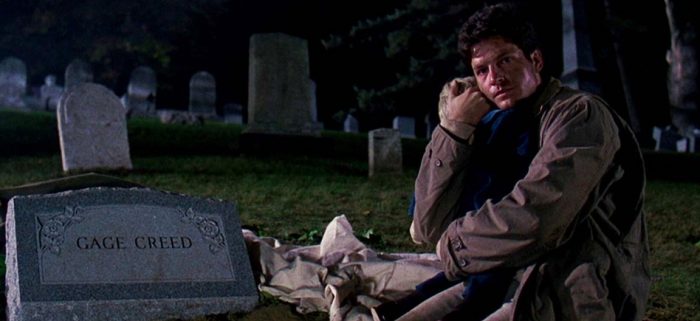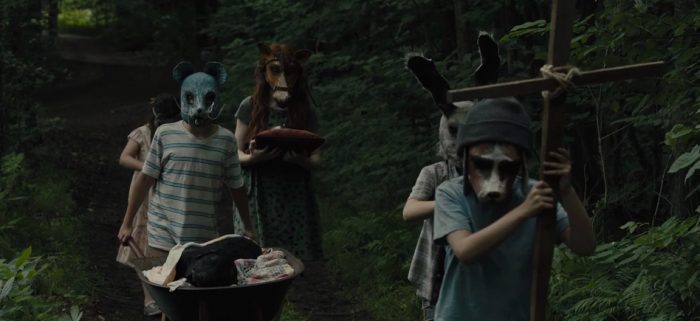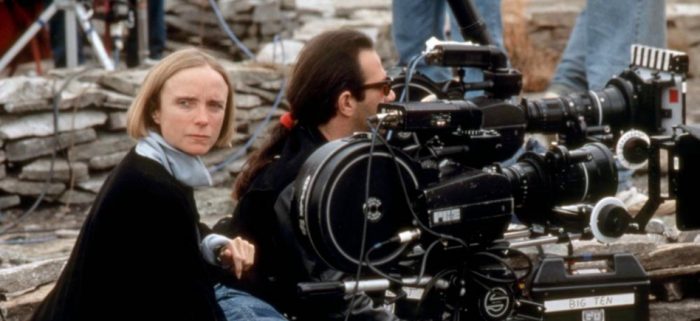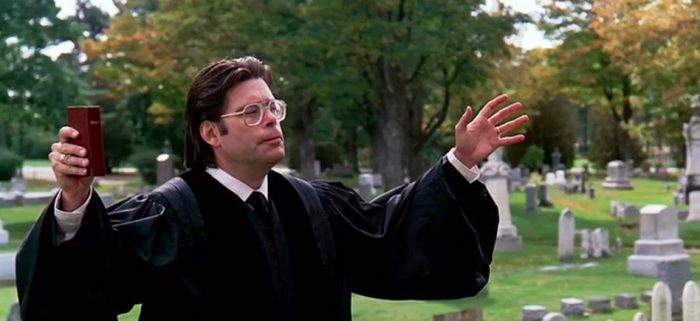1989 'Pet Sematary' Director Mary Lambert On Working With Stephen King, Going Dark, 'Pet Sematary 2' And More [Interview]
This week, a new take on Stephen King's Pet Sematary arrives to terrify a new generation of moviegoers. But this won't be the first time King's scariest book made it to the big screen. In 1989, director Mary Lambert helmed an adaptation that still has the power to send chills down your spine. Lambert's Pet Sematary was recently released on 4K Blu-ray, and the filmmaker spoke with me about the experience of bringing the Stephen King story to life, as well as her thoughts on the upcoming remake.
How Mary Lambert Followed the Path to Pet Sematary
Before she landed the job directing Pet Sematary, Mary Lambert was a filmmaker working in the world of music videos. She helmed videos for Madonna, Janet Jackson, the Eurythmics, and more. In 1987, she made her feature directorial debut with the thriller Siesta, starring Ellen Barkin, Gabriel Byrne and Jodie Foster. But the world of horror films was about to call – literally.
"I was in the editing room, editing a Madonna video, and my agent called and said, 'Would you like to read the script for Pet Sematary?'" Lambert says. "So I said yes, because I love Stephen King, and I'd been a huge fan for years and years, and I had read the book also. The script was a real quick read and it was really great. I at the time did not really think of myself as a horror director, but I was really drawn to this material because it wasn't just a gore fest or torture porn or teenagers getting murdered in the basement. It had such a compelling story about obsession, and ultimately it was a family drama. It takes the emotion and the attachment that's present in a family group and shows the dark side of it, and takes it down the darkest path to the Pet Sematary. So I really loved it."
Working With Stephen King
"Stephen [King] was the one that had the final call on the director, and we just got along really well," Lambert tells me. "I think he sensed that I didn't want to change anything in his book, or put the emphasis in a different direction, but just bring [his] characters to life, bring that story to life, that family drama about obsession and death and where that leads."
And how hands-on was King? The author wrote the script himself, and wanted to be sure the adaptation was remaining true to his vision.
"He was hands-on with the script," Lambert says, "and I never changed a single thing without discussing it with him. But at the same time, I never had any resistance from him – most of what I brought to the project was suggestions for how to cut and tighten it, and visual suggestions; how to tell the story visually. Sometimes I would have ideas that weren't in the script, and they were clearly major ideas that changed the mise-en-scène of the script, and sometimes I wanted to change things visually. I think he understood that I wasn't trying to change his story or his characters at all, just [wanting] to tell the story in the most visual way possible."Lambert continues: "Usually if I had an idea, I would call him up and tell him and he'd be like, 'Yeah, that's a great idea. And then...', and he'd always put another cherry on top. [H]e'd be like, 'Yes, and then we'll do that, and then we'll really scare them!' He's just like a big kid. He's so much fun to work with. He was there a lot, he was on the set, but he wasn't there every day, and I never felt like he was looking over my shoulder to, you know, keep tabs on what I did or to stop me from ruining his story. I always felt like he was there to support me. It was great."
Dark Places
Anyone who has read Pet Sematary, or seen the 1989 film, knows the story goes to some considerably dark places. Places many major studio productions are often hesitant to journey into. So how did Pet Sematary get away with so much? According to Lambert, it was a case of no one believing the film would be the smash hit it eventually became.
"Honestly, I don't think people thought it was going to be as successful as it was," says Lambert. "Stephen really wanted to make the movie, he wanted to write the script for it himself, and he had a lot of things that couldn't be done without his approval on this movie. And he had other projects with Paramount that had other writers and bigger, more important directors than myself, bigger stars, whatever. And I think that in a way, Pet Sematary just kind of slipped through the cracks, like, 'Well, how bad can it be? Just let him do it.' That was it, and then it started to test really well in the previews, and people were just like, 'Well, maybe it'll do better than we thought.' This was really a big commercial success, but it wasn't because it was their project...they put a lot of money on it and had a lot of money promoting or – it wasn't like the big project of the year that everyone was waiting for with bated breath. It was a surprise hit."
Raising Some Hell With Pet Sematary Two
After Pet Sematary was a surprise success, Paramount wanted more, and turned to Lambert to helm a sequel – Pet Sematary Two, released in 1992. Lambert wanted the film to follow a teenage Ellie Creed, the sole survivor of the first film. Ellie would return to the town of Ludlow, Maine, to try to find out what happened to her parents. Unfortunately, Paramount didn't think the idea would work.
"It was a time in history when it was – not too long ago – where it was kind of felt that women couldn't carry a movie, and especially a young girl couldn't carry a movie and that it wasn't such a good idea to do a sequel with Ellie as the main protagonist," Lambert says. "I don't know that that was actually voiced by anybody, but nobody wanted to make a sequel with Ellie as the protagonist. So we came up with the idea of just using the Pet Sematary as a character, and we came up with idea that I really liked, which was, let's see everything from the point of view of these really young boys, these adolescent boys who are just turning into teenagers. Raise some hell, you know? I love that. I love that tagline on the poster. And so it was a more irreverent approach to it.
"Pet Sematary [has] a dramatic edge to it, as I was saying earlier. It is about a family issue. It is about the dynamic between a father and his daughter and the husband the wife. And Pet 2 is really like, what's the worst thing that can happen to you if your dad dies – and he's a real creep and...I was about to describe him as a dickhead, but there's probably a better or more eloquent word. And that's the worst thing that could happen to a 13-year-old boy, but then, no, it's not the worst thing that can happen. The worst thing can happen is you kill him, you bury him in the pet sematary, and he comes back as a zombie – a crazy dickhead zombie. Ordinarily, I would look in the thesaurus for another work for dickhead, but I don't think that's going to help me out here. Um...a hard-ass. That's a little better. Anyway, I loved that attitude."
The New Pet Sematary
Is Mary Lambert interested in seeing the upcoming remake? Absolutely. In fact – she's already seen it, and came away enthusiastic.
"How could I not be interested in seeing it?" Lambert says. "I don't think I could actually remake it myself because I would be too...my hands would be tied by my deep attachment to the material and to what I already did. But I had the opportunity to see it at a screening and I think they did a really good job. I mean, [directors] Dennis [Widmyer] and Kevin [Kölsch], they did a great job with the script, and they gave Ellie a lot more agency in moving the plot. In the novel, she's the force behind Louis' decision to bring Church back to life, and Ellie's relationship with her father is very complex in the book, and it was important in the original movie, in the movie that I made, but it's even...more of a dynamic in the new movie. And, as somebody who was once a young girl, I really liked that."There's a lot of things in there I really like. There's an animal parade that the children do that's a great, wonderful way of dramatizing the sort of eerie force behind the pet sematary. In the original, Jud Crandall – in my movie – takes the Creeds up to the pet sematary, and he talks about each headstone, and he reads the epitaphs that are written there. He kind of evokes the spirit of the children who went through the emotion of losing their pets, which is usually the first way that a child encounters death, is when a pet dies. That's one of the powers behind the movie also – most people, that's their first experience with death, when their dog dies or their goldfish or something. So I really loved the children's parade. It's super eerie and it shows a lot of things without dialogue. I love it when you tell a story visually, with subtext instead of with text."
***
The Pet Sematary 1989 4K Blu-ray is available now. The 2019 Pet Sematary opens in theaters April 5, 2019. This interview has been edited and condensed for clarity.



